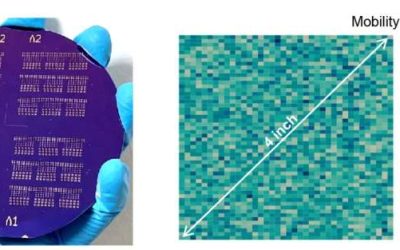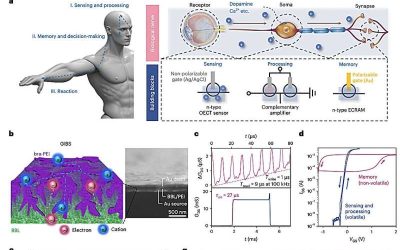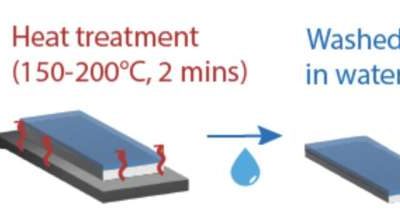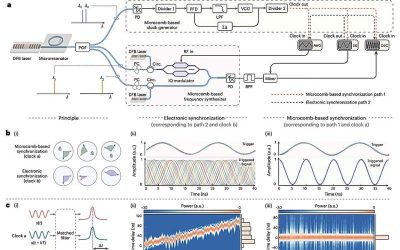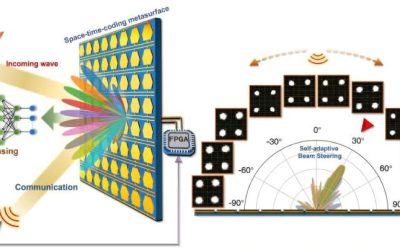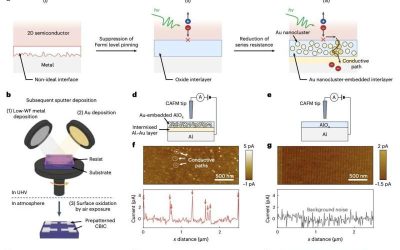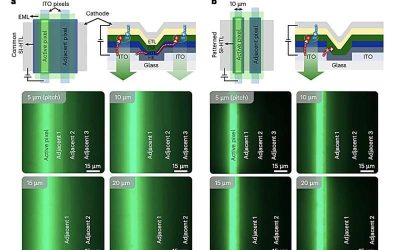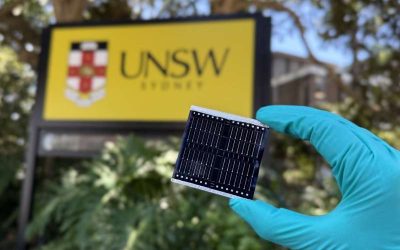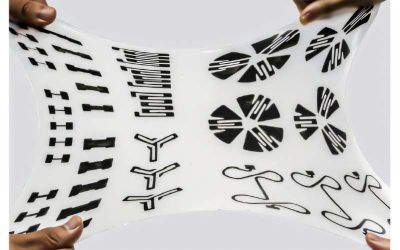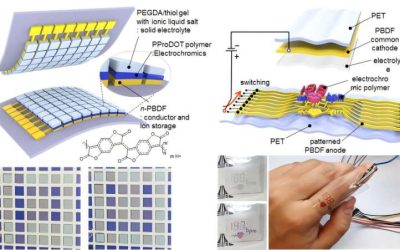Two-dimensional (2D) semiconductor materials could enable the development of smaller yet highly performing electronic components, thus contributing to the advancement of a variety of devices. While significant strides have been made in the synthesis of 2D...
Electronics & Semiconductors
Artificial nerve with organic transistor design shows promise for brain-machine interfaces
Heat-based stabilization of a conductive polymer simplifies bioelectronics fabrication
Recent advances in the field of materials science have opened new possibilities for the fabrication of bioelectronics, devices designed to be worn or implanted in the human body. Bioelectronics can help to track or support the function of organs, tissues and cells,...
A new on-chip microcomb to synchronize signals in optoelectronics
Optoelectronics are promising devices that combine optical components, which operate leveraging light, with electronics, which leverage electrical current. Optoelectronic systems could transmit data faster than conventional electronics, thus opening new possibilities...
Space-time-coding metasurface could transform wireless networks with dual-functionality for 6G era
Programmable metasurfaces (PMs), also sometimes referred to as reconfigurable intelligence surfaces, are smart surfaces that reflect wireless signals, but can also dynamically manipulate electromagnetic waves in real-time. These surfaces are highly advantageous for...
New conductive-bridge interlayer contacts could boost performance of 2D optoelectronics
Photodiodes are widely used devices based on semiconducting materials that can convert light into electrical current. These devices are central components of various contemporary technologies, including photovoltaics (PVs) and some sensing, imaging, measurement and...
High-definition organic LED microdisplays with reduced electrical crosstalk could enhance VR and AR experiences
The rapid advancement of the electronics industry is opening new possibilities for the development of increasingly advanced device components, including displays. Many of the most widely used and highly performing displays developed to date are based on organic...
Hydrogen annealing approach sets new efficiency record for kesterite solar cells
Photovoltaics (PVs), devices that can convert sunlight into electrical power, are becoming increasingly widespread and more people worldwide are now relying on them to generate electricity. Renewable energy engineers worldwide are working to identify materials and...
A new method to fabricate soft electronics via particle engulfment printing
The electronics industry has been rapidly advancing over the past few decades, leading to the development of countless devices of different sizes and shapes, which are designed for a variety of applications.
New n-doped transparent conductor shows promise for all-polymer electrochromic displays
Recent technological advances have enabled the development of increasingly sophisticated and energy-efficient displays for electronic devices. To further improve existing displays and create even more efficient ones, some engineers have been trying to synthesize and...

